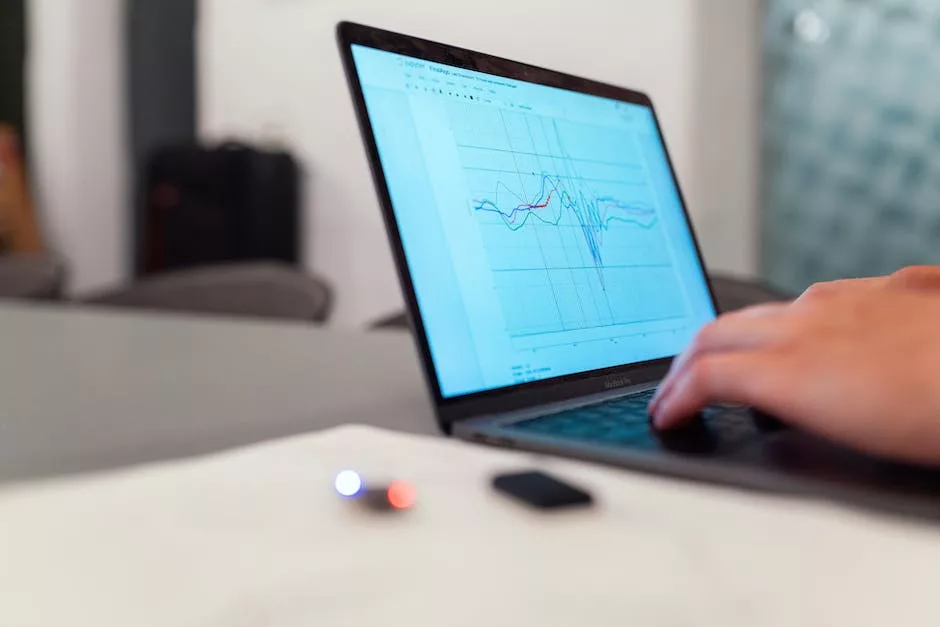Introduction
Introduction:
Monitoring water quality is crucial for ensuring the safety and sustainability of our water resources. It involves the systematic assessment of various physical, chemical, and biological parameters to determine the health and suitability of water for different purposes. This process helps identify potential contaminants, assess the impact of human activities, and guide effective management strategies. In this article, we will explore the importance of monitoring water quality and discuss some common methods used to assess and maintain the quality of our water sources.
The Importance of Monitoring Water Quality for Environmental Conservation

Water, water everywhere, but is it safe to drink? That’s the question we should all be asking ourselves. You see, water is not just a refreshing beverage or a place for fish to swim. It’s a precious resource that we need to protect. And one way to do that is by monitoring its quality. Yes, folks, it’s time to put on our lab coats and dive into the world of water quality monitoring.
Now, you might be wondering why monitoring water quality is so important. Well, let me tell you, it’s not just about making sure your tap water tastes good. It’s about protecting the environment and all the creatures that call it home. You see, water pollution is a real problem, and it’s not just caused by that neighbor who never cleans up after their dog. No, it’s caused by a whole host of things, like industrial waste, agricultural runoff, and even the chemicals we use in our own homes.
But fear not, my friends, because monitoring water quality can help us identify and address these issues. By regularly testing the water in our rivers, lakes, and oceans, we can determine if there are any harmful contaminants present. And once we know what we’re dealing with, we can take steps to clean up our act. It’s like giving Mother Nature a spa day, but without the cucumber slices.
So, how exactly do we go about monitoring water quality? Well, it’s not as complicated as you might think. In fact, you don’t need a fancy degree in chemistry or a lab full of beakers to get started. All you need is a few basic tools and a sense of adventure. Okay, maybe not the adventure part, but it does make it more exciting, doesn’t it?
First things first, you’ll need a water testing kit. These can be purchased online or at your local hardware store. They usually come with everything you need to get started, including test strips, vials, and instructions that are hopefully written in plain English. Once you have your kit, it’s time to find a water source to test. Now, I don’t recommend sticking your head in the toilet or anything like that. Instead, try a nearby river, lake, or even your own tap water.
Next, you’ll want to follow the instructions in your testing kit to collect a water sample. This usually involves filling a vial with water and then adding a test strip or two. Then, you’ll need to wait a few minutes for the magic to happen. It’s like watching a science experiment unfold before your very eyes. And if you’re lucky, you might even get to wear safety goggles. Safety first, people!
Once the test is complete, you’ll be able to interpret the results. This is where things can get a little tricky, but fear not, my friends, because there are plenty of resources available to help you out. You can consult the internet, join a local environmental group, or even ask your friendly neighborhood scientist for guidance. The important thing is that you take action based on the results. If you find that your water is contaminated, don’t just shrug your shoulders and move on. Instead, take steps to address the issue, whether it’s contacting your local government or investing in a water filtration system.
So, my fellow water warriors, let’s raise our test tubes and toast to the importance of monitoring water quality. By doing so, we can protect our environment, ensure the health and safety of our communities, and maybe even impress our friends with our newfound knowledge of chemistry. Cheers to clean water for all!
Understanding the Methods and Techniques for Monitoring Water Quality
Monitoring Water Quality: Why It’s Important and How to Do It
Water, the elixir of life, is essential for our survival. We use it for drinking, cooking, bathing, and even for recreational activities like swimming. But have you ever wondered about the quality of the water you’re using? Is it safe? Is it clean? Well, fear not, my friend, because monitoring water quality is here to save the day!
Now, you might be thinking, “Why should I bother monitoring water quality? Can’t I just trust that the water coming out of my tap is safe?” Oh, my dear reader, if only life were that simple! The truth is, water quality can vary greatly depending on various factors, such as pollution, industrial waste, and even natural occurrences like algae blooms. So, it’s crucial to keep an eye on the quality of the water you’re using to ensure your well-being.
But how does one go about monitoring water quality, you ask? Well, fret not, for I shall guide you through the methods and techniques like a water quality superhero! First and foremost, you need to understand that water quality monitoring involves testing for various parameters, such as pH levels, dissolved oxygen, turbidity, and the presence of harmful substances like heavy metals or bacteria.
One of the simplest and most common methods for monitoring water quality is through the use of test kits. These kits are like little chemistry sets for water enthusiasts. They usually contain test strips or reagents that change color when exposed to specific water parameters. It’s like a magic trick, but with science! Just dip the strip or add a few drops of the reagent, and voila! You’ll have a rough idea of the water’s quality.
If you’re feeling a bit more adventurous and want to dive deeper into water quality monitoring, you can invest in more advanced equipment. For instance, there are portable meters that can measure parameters like pH, conductivity, and dissolved oxygen with greater accuracy. These meters are like the James Bond gadgets of the water quality world, allowing you to be a secret agent of cleanliness!
Now, let’s talk about the importance of monitoring water quality. Besides ensuring your own safety, monitoring water quality is crucial for the environment as well. By keeping an eye on the quality of our water sources, we can identify and address pollution issues before they become major problems. It’s like being a detective, but instead of solving crimes, you’re solving water quality mysteries!
Moreover, monitoring water quality helps us understand the impact of human activities on our water bodies. It’s like a reality check for our actions! If we notice a sudden increase in pollutants or a decrease in oxygen levels, it’s a wake-up call to reassess our practices and make necessary changes. It’s like a friendly reminder from Mother Nature to be more responsible!
In conclusion, monitoring water quality is not only important for our own well-being but also for the health of our environment. Whether you choose to use simple test kits or fancy meters, the key is to stay vigilant and keep an eye on the quality of the water you’re using. So, my dear reader, go forth and become a water quality superhero, protecting yourself and the world, one drop at a time!
How to Implement Effective Water Quality Monitoring Programs
Water quality monitoring is a serious business, but that doesn’t mean we can’t have a little fun while doing it. After all, who said science had to be boring? In this section, we’ll explore how to implement effective water quality monitoring programs with a touch of humor. So grab your lab coat and safety goggles, because things are about to get interesting!
First things first, let’s talk about why monitoring water quality is so important. Water is essential for life, and ensuring its quality is crucial for both humans and the environment. By monitoring water quality, we can detect any potential contaminants or pollutants that may be present. This allows us to take necessary actions to protect our health and the health of our ecosystems.
Now, let’s dive into the nitty-gritty of implementing an effective water quality monitoring program. The first step is to establish clear objectives. What do you hope to achieve through your monitoring efforts? Are you primarily concerned with drinking water quality, or are you more focused on the health of aquatic ecosystems? Defining your objectives will help guide your monitoring activities and ensure you’re collecting the right data.
Next, it’s time to choose your monitoring methods. There are various ways to assess water quality, ranging from simple field tests to more complex laboratory analyses. Field tests are like the fast food of water quality monitoring – quick and convenient. They provide immediate results but may not be as accurate as laboratory analyses. On the other hand, laboratory analyses are like a gourmet meal – they take time and effort, but the results are worth it. Consider your resources and the level of accuracy you require when selecting your monitoring methods.
Once you’ve chosen your methods, it’s time to get out in the field and start collecting samples. This is where things can get a little messy, so be prepared to get your hands dirty. Remember, it’s all in the name of science! Take samples from various locations and at different times to get a comprehensive understanding of water quality. And don’t forget to label your samples properly – you wouldn’t want to mix up your water samples with your morning coffee!
After collecting your samples, it’s time to analyze them. This is where the real detective work begins. Put on your Sherlock Holmes hat and start examining the evidence. Look for any signs of trouble – unusual colors, odors, or floating objects. And don’t forget to use your trusty pH meter and other analytical tools to measure key parameters like dissolved oxygen, turbidity, and nutrient levels. Remember, the more data you collect, the better your understanding of water quality will be.
Once you’ve analyzed your samples, it’s time to interpret the results. This is where your scientific expertise comes into play. Look for any patterns or trends in the data. Are there any sudden spikes in pollutant levels? Are certain areas consistently showing poor water quality? These insights will help you identify potential sources of contamination and develop strategies to address them.
Finally, it’s important to communicate your findings to the relevant stakeholders. This could be government agencies, water utilities, or the general public. Present your results in a clear and concise manner, using visuals like graphs and charts to make the information more digestible. And don’t be afraid to inject a little humor into your presentations – after all, who said science had to be serious all the time?
So there you have it – a humorous guide to implementing effective water quality monitoring programs. Remember, while the work may be serious, there’s no harm in having a little fun along the way. So put on your lab coat, grab your pH meter, and let’s make water quality monitoring an adventure worth diving into!
Conclusion
In conclusion, monitoring water quality is important to ensure the safety and health of both humans and the environment. It helps identify potential contaminants, assess the effectiveness of water treatment processes, and inform decision-making for water resource management. Various methods can be employed to monitor water quality, including physical, chemical, and biological testing. Regular monitoring and analysis of water samples are crucial to detect any changes or issues in water quality and take appropriate actions to protect public health and the environment.



